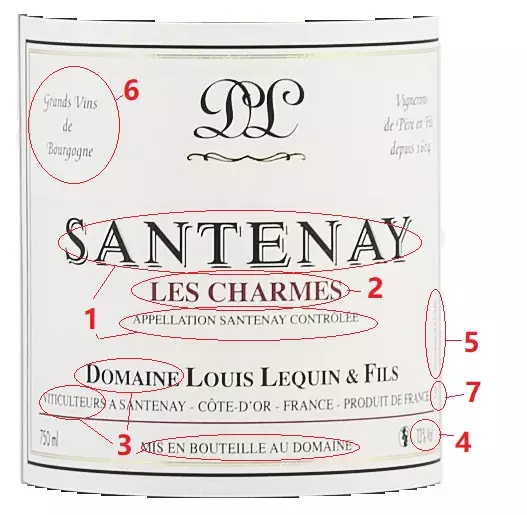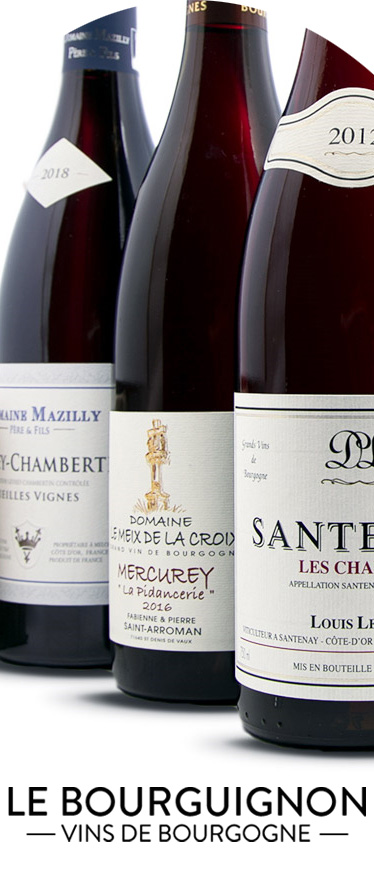On the label of a Burgundy Wine, what is the essential information, what is the irrelevant information?
Information that will be valuable to you when choosing a bottle…
If clothes don’t make a Monk, Label doesn’t make Wine. But the information that appears there – for the most part mandatory – provides some useful information, which will help inform your purchase. Example with this red Santenay.

1. The Name
This is the fundamental – and obligatory – statement on the label. It determines, neither more nor less, the regulations to which the product was subject during its development. Three scenarios
– The wine was subject to AOC type specifications (appellation d’origine contrôlée). This is the peak in terms of requirements. We then see on the label the words “AOC” or “AOP”, or the term “controlled” or “protected”. In this case, the name of the appellation appears systematically. If applicable, Santenay. Can be accompanied by the mention premier cru or grand cru.
– The wine was subject to IGP (Protected Geographical Indication) type specifications, which are less demanding.
– The wine does not have a geographical indication, therefore no specifications. The name is then simply “Vin de France” or “Red wine”
2. The “place” or “Climate”
Frequent in Burgundy, this addition of geographical precision is not obligatory. It allows you to know with more precision where the plot or within the AOC is located. We can then learn about this terroir and try to guess the style of wine we will drink. Example here: this vintage comes from a plot in the south of Santenay, not far from Les Maranges, at the bottom of the hillside. With this type of fairly deep soil, we can imagine a certain potential for structure and roundness… Even if the location is not everything!
3. The type of Domain
The terms “estate” and “winemaker” indicate that the winemaker worked his own grapes. While “house” or “negociant” mean that the winemaker bought the grapes. Information for the curious, but which says absolutely nothing about the quality of the wine.
4. Alcohol level
Let’s be clear: the prejudice that the proportion of alcohol is correlated, in one direction or the other, with the quality of a wine, is false. This information will, at most, give an indication of its power and acidity. At 11%, we can legitimately expect a fresh, even lively Chardonnay, while a white at 14.5% announces roundness.
5. The statement “contains sulphites”
This is a mandatory mention when a wine includes a quantity, even minimal, of this preservative. However, yeasts produce them naturally during winemaking, so this is the case for all wines, even those claimed to be “natural”! This is therefore a mention which does not allow us to differentiate two wines.
6. “Great Burgundy Wine”
Imposed by the inter-profession, this mention only indicates that it is an AOC wine of village, premier cru or grand cru level. The regional AOCs are entitled to a simple mention “Burgundy Wine”.

